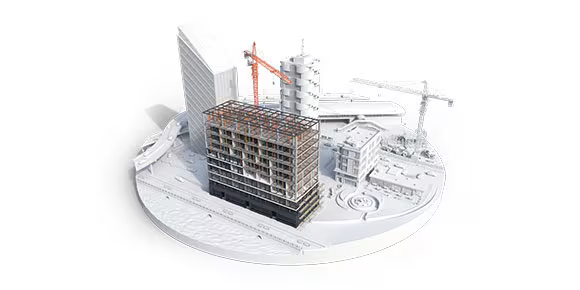BIM: The essential Architect Tool that is Moving the Profession to the Next Level

What is BIM used for?
BIM is used for creating and managing data during the design, construction, and operations process. BIM integrates multi-disciplinary data to create detailed digital representations that are managed in an open cloud platform for real-time collaboration. Using BIM gives you greater visibility, better decision-making, more sustainable options, and cost-savings on AEC projects.
What is the process of BIM?
The process of BIM supports the creation of intelligent data that can be used throughout the lifecycle of a building or infrastructure project.
Plan (Image-1)
Inform project planning by combining reality capture and real-world data to generate context models of the existing built and natural environment.

Design (Image-2
During this phase, conceptual design, analysis, detailing and documentation are performed. The preconstruction process begins using BIM data to inform scheduling and logistics.
EXPLORE ALL TRAINING OPPORTUNITIES BY UDC TRAINING CENTER

Build (Image-3)
During this phase, fabrication begins using BIM specifications. Project construction logistics are shared with trades and contractors to ensure optimum timing and efficiency.

Operate (Image-4)
BIM data carries over to operations and maintenance of finished assets. BIM data can be used down the road for cost-effective renovation or efficient deconstruction too.

EXPLORE ALL TRAINING OPPORTUNITIES BY UDC TRAINING CENTER
Why is BIM important?
According to the UN, by 2050 the world's population will be 9.7 billion. The global AEC industry must look to smarter, more efficient ways to design and build not just as a means to keep up with global demand but to help create spaces that are smarter and more resilient too.
BIM not only allows design and construction teams to work more efficiently, but it allows them to capture the data they create during the process to benefit operations and maintenance activities. This is why BIM mandates are increasing across the globe.
How do teams collaborate on BIM?
BIM is revolutionizing the way projects are delivered across industries, adding intelligence and efficiency to project execution–and connecting teams, data, and workflows at every stage of the project in the cloud for better project outcomes.
What is BIM Interoperability?
BIM Interoperability is the ability of AEC project teams to work and communicate fluidly across disciplines and industries, regardless of preferred software tools and vendors. At Autodesk, we’re committed to supporting an open and interoperable AEC software ecosystem defined by seamless data connection.
Share:
Διαβάστε Επίσης
Σε έναν κόσμο που επιτακτικά αναζητά λύσεις για τη μείωση του περιβαλλοντικού αποτυπώματος
Η Σαγράδα Φαμίλια στη Βαρκελώνη έσπασε και επίσημα ένα παγκόσμιο ρεκόρ:
 Ελληνικά
Ελληνικά  English
English


